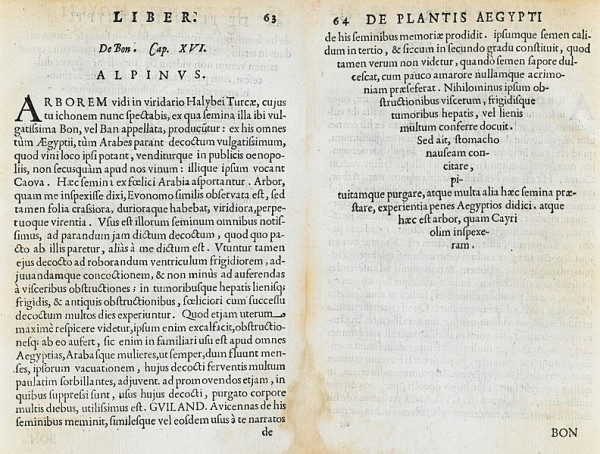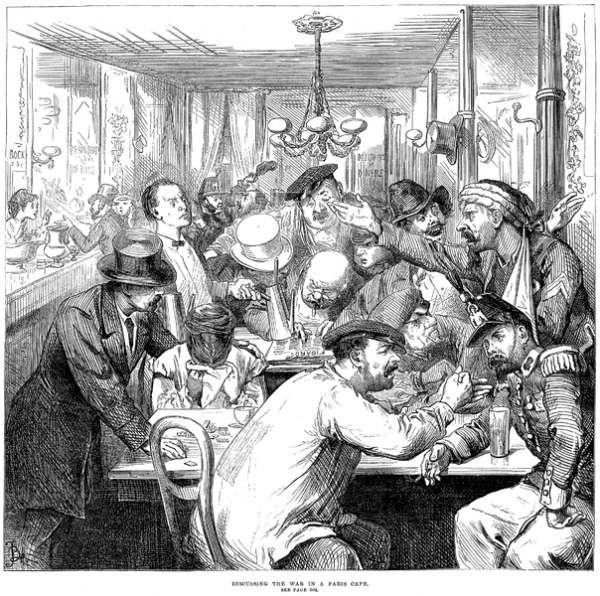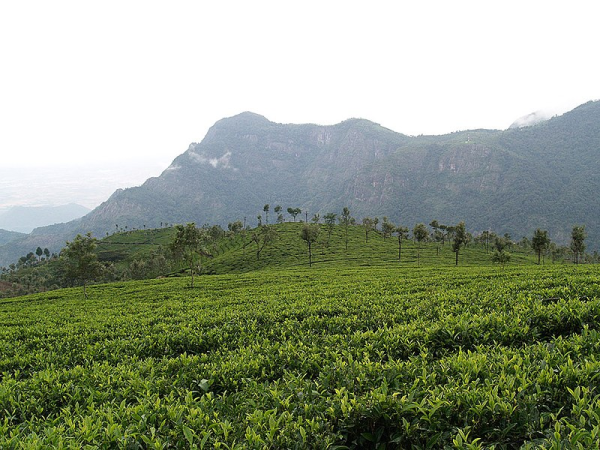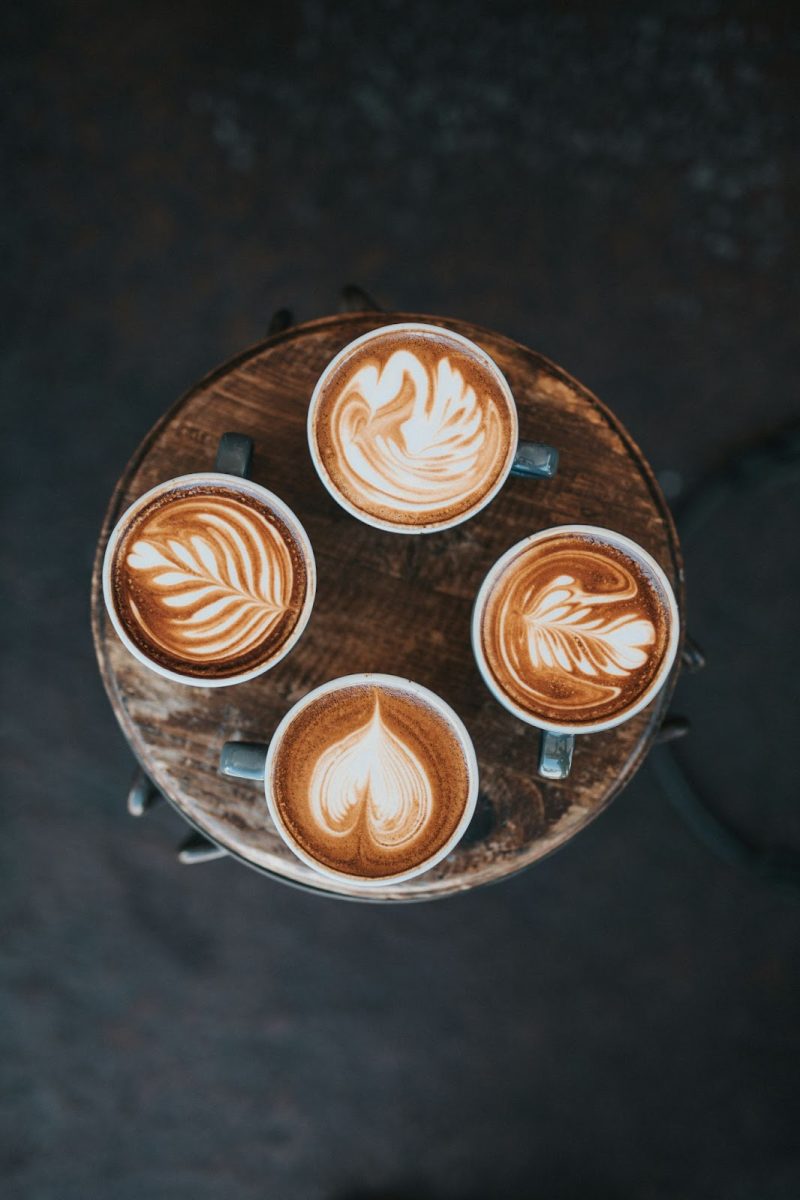I cannot recall a single morning when I didn’t drink coffee. I mean, it’s no surprise that as a Bronx Science student, I need caffeinated goodness to keep me awake. Can you imagine a world without the comforting aroma of freshly brewed coffee beans, without bustling cafes, without the source of all of our sanity? It’s nightmarish to think about.
Thankfully, we do not have to live in a world without coffee. In fact, coffee is one of the most popular drinks in the world, as well as one of the most popular trade commodities sought after in the world, second only to oil. Collectively, humans drink 2.25 billion cups of coffee daily all throughout the globe. New York City, the city that never sleeps at night, drinks seven times as much coffee than any other city in the country. There is no doubt that coffee is extremely popular, but how did it become so popular?
The origins of coffee can be traced back to a legend from the Ethiopian plateau. It states that there was once a goat herder by the name of Kaldi, who noticed the strange and energetic behavior of his goats after they had eaten unusual beans. Kaldi traveled to his local monastery, informing them of his discovery, and soon, the officials created a drink, out of the same beans, that had the same effect that the goats experienced. The mysterious drink caused Kaldi to be extremely alert and attentive throughout the long hours of evening prayers.
This “energizing bean” was a revolutionary discovery and it spread like wildfire, eastward into the Arabian peninsula. The beans, as people have discovered, were served and utilized in a variety of manners. Originally, coffee was mixed in with animal fat to produce a protein snack bar. At some other point, the fermented pulp of the plant was used to make a wine-like concoction, similar to how humans made a beverage using the cacao fruit (before chocolate was created by the Olmecs). Individuals also made drinks around 1000 A.D. from the whole coffee fruit, which included the beans inside and the hull itself.
The beans were used in many ways, one of which were for medicinal purposes. When it was first discovered, people considered coffee as a “gift of God,” believing it would bring individuals closer to God. Others, such as Arab traders, soon began grinding the beans and boiling them in water to form a sort of elixir, which served as liquid medicine that stimulated alertness and concentration.

Coffee went on to be studied as an excellent potential therapeutic remedy. The famous ancient physician Avicenna, who wrote The Canon of Medicine, acknowledged coffee as a therapeutic modality for medicine. Additionally, German doctor Leonhard Rauwolf traveled to Syria and was impressed by the bean drink, known as chaube at the time. He wrote in 1582, “They have a very nice drink called chaube that is almost as black as ink and very good in disease, especially stomach ailment.” It was not, however, until the 13th century when people began to roast coffee beans. Coffee bean roasting was the first essential step in making the now famous drink today.
By the 15th and 16th century, coffee beans were being grown in the Yemen district of Arabia, and it was also well known in Persia, Egypt, Syria, and Turkey. Due to its immense popularity in the Arabian peninsula, certain buildings began to emerge where they sold the drink. These buildings, known as Qahveh khaneh, were coffee houses where people traveled in order to drink coffee and socialize. These structures appeared frequently in huge cities and trading ports, naturally leading to increased social activity. Qahveh khaneh were also called “schools of the wise” because of the various activities people engaged in. People listened to music, watched performances, taught lessons, and played chess and other games, all while drinking a nice hot cup of coffee.
When European explorers and travelers visited the Middle East, it was no surprise that coffee sparked their interest. As a result of the booming coffee business in Arabia, explorers took some back to Europe and it soon became sensational. Italy was the first European country to curate coffee. Coffee grounds were imported from the Ottoman Empire by Venetian merchants. However, at some point during the beginnings of the coffee craze, some individuals were suspicious of the drink. They believed it might be the “bitter invention of Satan.” The suspicion grew so deep that it was condemned by the local clergy in Venice in 1615. Eventually, Pope Clement VIII was asked to intervene in the debate and when he tried coffee for the first time, he found the drink absolutely amazing. After giving the drink a papal approval, coffee houses began spreading rapidly around the country and then Europe.
In 1645, the first European coffee house was opened in Venice. Six years later, England opened up their own coffee shop inside Oxford. Similarly to the Middle East, coffee houses grew larger and larger in popularity and by the mid-17th century, there were over 300 coffee houses in London alone, attracting many merchants, shippers, and brokers. However, these social hubs were only open to men, as such topics of discussion were business and news, subjects women were not allowed to take part in. Despite coffee houses being excluded from women, everyone in Europe enjoyed the new drink inside their homes. For example, people began using coffee as the breakfast drink, replacing the previous breakfast beverages such as alcohol, beer, and wine.

During the 16th century, many European kingdoms began expanding their influence across the Atlantic and into the New World. Monarchs established small colonies in order to establish trade for more resources and gain territory. These colonies were home to hundreds of families looking for a new life in the new world. American colonists have adopted some aspects of their British culture, which includes their drinking habits. During the mid 1600’s, coffee was brought to New Amsterdam, later known as New York.
Coffee was not widely popular in the thirteen colonies when it was first introduced, however. Tea was much more favored due to British customs. This all changed when the British monarch started to tax the colonists as a result of the French and Indian War. When the tea tax was first established, colonists were outraged. They revolted against the tax by throwing tons of tea boxes into the Boston Harbor, which would go down in history as the famous Boston Tea Party. From then on, Americans switched their preferred drink to coffee, becoming known as the “favorite drink of the civilized world.”
Following coffee’s successful global debut across continents, there was a notable surge in demand for coffee plantations. For instance, the Dutch were successful in planting coffee beans in Batavia, Indonesia, also known as an Island of Java. Additionally, they expanded their coffee trees to the islands of Sumatra and Celebes.

Coffee spread not just in Oceania, but also near the Caribbean. In 1714, the Mayor of Amsterdam provided a young coffee plant to King Louis XIV of France as a gift. That specific coffee plant was originally from Holland in 1713. Coffee was valuable, and the King ordered that the plant were to be planted in the Royal Botanical Garden in Paris. The coffee plant flourished under royal care, but in 1723, a naval officer by the name of Gabriel de Clieu managed to obtain a seedling from the garden. He wanted to take the plant to Martinique, a rugged Caribbean island part of the Lesser Antilles. Thus, he arranged a voyage that turned out to be harsh and difficult. According to Clieu’s account, water was rationed so that there would be enough for the coffee plant to stay healthy. Stories also imply that Clieu experienced many pirate attacks and cruel storms. Nevertheless, he managed to get the coffee plant to the French owned island and as a result, caused the spread of over 18 million coffee trees on the island for the next 50 years. The one seedling alone was the parent seed for all coffee trees all throughout the Caribbean, and South and Central America.
Today, Brazil holds the title for the world’s top producer of coffee. Coffee first arrived in Brazil around 1727, when a man named Francisco de Mello Palheta was sent by the Portuguese emperor to French Guiana to obtain coffee seedlings. When he arrived, the French were reluctant to share their seedlings. However, according to stories, Palheta managed to seduce the wife of the French governor. She gifted Palheta a bouquet of flowers and inside the bouquet was a plethora of coffee seeds.
Types of Coffee Beans
Coffee beans produce a vast array of beverages for the public that are immensely popular today, such as espressos, cappuccinos, mochas, and lattes. But one of the main reasons people are so obsessed with coffee is due to the invigorating effect produced by the caffeine, the alkaloid present inside the coffee.
There are two species of coffee beans that supply the world’s obsession. There is the Coffea arabica and the C. Canephora. Arabica coffee is much milder and flavorful when brewed compared to C. Canephora coffee. Additionally, it is a lot more widespread. However, arabica coffee is more delicate and is extremely vulnerable to all types of pests. There are certain conditions needed in order to grow arabica coffee. First, it requires a cool and subtropical climate. Second, it needs a lot of moisture and shade. And thirdly, arabica coffee is known for growing at extreme heights; it must grow at high elevations ranging from 2,000 to 6,500 feet. Many areas meet these requirements, and the main producers of arabica coffee are Latin America, eastern Africa, large regions of Asia, and Arabia.
In Central Africa, Southeast Asia, and Brazil, a different type of coffee is produced. Robusta, a main variety of C. Canephora, is a lot easier to produce compared to arabica. For one thing, it can grow at much lower altitudes, ranging from sea level to 2,000 feet. Additionally, the beans are a lot cheaper. Robusta is extremely popular in the western world, as many western coffee commercials choose the Robusta variety to display. One of the reasons why it might be more popular is because the caffeine content inside Robusta is twice the content in arabica coffee. During the 1950’s, when instant coffee was finally perfected, Robusta coffee production skyrocketed in Africa, making it the most popular variety.

There are many different varieties within the two main species of coffee, grown throughout the globe. The “coffee belt,” which consists of countries located near the equator, typically produce most of the world’s coffee. Although Arabica and Robusta coffee beans are the most produced varieties, there are actually about 120 distinct coffee bean types that stem from these two plants.
Mocha coffee beans, for instance, are from Mocha, Yemen, and they are a type of variety from Arabica coffee. Many might recognize this bean type due to its popularity in many drinks and its ability to add a chocolatey flavor to lattes, cappuccinos, and other espresso based beverages. These beans have a long history intertwined with Java beans, and were heavily sought after by traders on the Silk Road. Now, Mocha beans are still grown in Yemen as well as Hawaii.
The Maragogype variety is another highly coveted bean type, known for its high quality brews. Sometimes people refer to it as the “elephant coffee bean” since it grows larger than most beans. Maragogype was discovered originally as a mutation from the Typica plants in Brazil during the late 1800’s and it is also another variation from the Arabica plants.
Another unique coffee bean plant is the Tanzania Peaberries, stemming from the Typica branch. These beans are also known as a brand and only grow in one specific region, which are near the slopes of Mount Kilimanjaro in Tanzania. As a result of growing on volcanic soil, the beans have a unique flavor consisting of a rich chocolate tang, hints of a dark fruit essence, and a sweet aftertaste.
Coffee in the Making
So how exactly is coffee produced? Coffee, no matter the species or variety, starts off at the same stage: as the ripened fruit of a coffee plant. These fruits are known as coffee cherries due to their shapes, and each of them contain around two coffee beans. There are rare instances where some coffee beans contain more than two or one bean. In fact, only about 5% of coffee cherries hold one seed and these rare fruits are called beaberries. Beaberries are especially valuable; since they are more densely packed with caffeine and produce sweeter and flavorful coffee.
The cherries then get disengaged by separating the seeds from the fruit coverings and from the pulp. Afterwards, they get dried out. There are three techniques used to process the coffee beans after separation. First, there is the natural process of drying the beans out immediately under a hot source. Second, there is the wet process, where beans are washed. Finally, there is the hybrid method, which is a combination of the other two. The coffee beans are washed, then dried.
If desired, coffee beans can also be set up to become decaffeinated. To remove the caffeine from the bean, it must occur before the beans get to the roasting stage. Decaffeination starts by forcing the beans to swell immensely with water. Then, experts use an organic solvent or activated carbon to remove the caffeine. However, the caffeine is prevalent all throughout the bean, and it is very difficult to decaffeinate coffee. Thus, there is no guarantee that the caffeine will be 100% removed entirely.
After the processing stage, coffee beans are sold off to be graded and roasted. This is considered the most important step to coffee making. Coffee beans get their aromatic and gustatory charms from the high temperatures of the roasting process. Temperatures are consistent, relatively speaking, no matter the type of coffee beans being roasted. They are raised progressively from 180 to 250 degrees Celsius, or around 356 to 482 degrees Fahrenheit. The temperature is very crucial; if roasted for an excessive amount of time, the beans could lose their flavor and desired aroma compounds, which are volatile molecules that produce an odor. The one exception to this rule are the Robusta beans. Typically, these varieties are purposefully over-roasted in order to get rid of the bean’s natural bitterness.
When the coffee beans are done roasting, they are sent to be ground or milled. Grinding is done by feeding the coffee through a series of serrated or scored rollers through small gaps. This ensures that the beans are ground to a desired particle size. This step is important because the degree of fineness ensures whether the flavor of the bean is maintained or washed out. If the coffee is way too coarse, water will filter out too fast to pick up the flavor. However, if the coffee is too fine, water filters slowly, causing the particles that deposit at the bottom of the cup to stay.
Finally, the coffee is finished processing and is ready to be packaged. This step must be done carefully; quality packaging determines whether or not air and moisture is being prevented from reaching the product and reducing the risk of the coffee losing its aromatic qualities. Air can damage the coffee, since it causes rancidity through oxidation of fatty components inside the coffee structures. The best materials for packaging to prevent this risk are polyethylene and complexes of aluminum and cellulose. These materials are known for their excellent strength, flexibility, and resistance to moisture and chemicals. Some of the best methods for packaging include packaging under a vacuum or in an inert gas inside impervious containers.
After packaging, coffee is ready to be sold. It can be found almost anywhere, from supermarkets to online websites. However, despite its accessibility, it’s important to understand the long and intricate process behind the staple breakfast drink. Not only does coffee keep us alert, but it has a captivating journey through history, weaving itself into the fabric of our society. Can you imagine, over four hundred years ago, people were laughing and enjoying their cups of coffee, just like we do today? So the next time you take a sip of your favorite brew, try to appreciate the years that built coffee to the world’s treasured drink that it is today.
Can you imagine, over four hundred years ago, people were laughing and enjoying their cups of coffee, just like we do today? So the next time you take a sip of your favorite brew, try to appreciate the years that built coffee to the world’s treasured drink that it is today.

